Essay on Economic Environment of Business
Number of words: 3894
Introduction
Zimbabwe is located in southern Africa, and it is a landlocked country. The population was approximately 15.6 million in the year 2015. The economy of Zimbabwe is mainly dependent on agriculture and related businesses. Approximately 70% population is dependent on agricultural produce. At the same time, the entire agriculture sector contributes 18% of Zimbabwe’s GDP, according to 2013 reports. Different businesses closely rely on agriculture playing a significant role in Zimbabweans lives, and those are animal farming (cattle, pigs, goats, sheep, and poultry). Many SMEs (Small to medium scales enterprises) emerged after land reforms in 1998. However, the productivity of the businesses was comparatively low due to the lack of skills. Therefore, the group of farmers in Zimbabwe have come together for a pig farming business and set up an enterprise called Mhuri enterprise. This enterprise has beaten the odds and received various recognitions (Lee, 2018). This report presents the economic analysis of pig farming by Mhuri enterprises in Zimbabwe and the pig farming industry in South Africa. The report has been presented using value chain analysis, factors of production, different challenges faced by the company, and finally, critical success factors.
Objectives
The objective of this economic analysis is listed below,
- Economic analysis of Mhuri enterprise as well as pig production in Zimbabwe
- Economic analysis of the animal farming industry in South Africa
- Recommending short- and long-term economic strategy for the Zimbabwe government
Economic analysis of Mhuri Enterprise in Zimbabwe
Mhuri enterprises, by their unique methodology, have reduced the production cost of pig farming to earn more profit. In Zimbabwe, small to medium scale enterprises face infinite barriers such as regulatory barriers, financial barriers, and barriers in business. A group of 30 farmers started a cooperative pig farming under the title Mhuri Industries to restructure the value chain to enhance its profit by establishing its slaughterhouse. The slaughterhouse eliminated dominant processing fees (Lee, 2018). This economic analysis discusses the value chain of Mhuri Enterprise, along with various factors of production, challenges, and success factors.
Value chain analysis
The value chain analysis compares the existing value chain of pig farming within Zimbabwe and the restructured value chain by Mhuri enterprises. The value chain is nothing but different internal activities of an organization or the process that converts the input into output. Input can be a raw material or information, whereas output could be a product or service. Value chain analysis is the process of identifying primary and support activities within a value chain that enhance the value of the product and analysing the same to reduce the cost (Jurevicius, 2013). Figure 1 shows the value chain of the pig farming industry in Zimbabwe. Various players are connected to form a network to ensure the flow from the pig farmers to the market. The critical input supplier of the entire value chain is a pig producer operating on either a commercial or non-commercial scale. Approximately 40,000 female pigs reported being in non-commercial produce. The commercial pig farmers are classified into three categories depending upon the size of the production unit. A small scale has less than 50 female pigs; a medium scale has female pigs between 50 to 100, whereas the large-scale unit has more female pigs than 100. A report in 2014 says there is a total of 700 commercial pig farmers in Zimbabwe. In 2007 the national commercial sow herd was at the peak and reported to be 19,000 whereas, in 2008, it was reduced dramatically to 8,000; its lowest numbers ever due to the economic meltdown. After the redenomination of Zimbabwe’s currency in 2009, pig farming experienced a rebound. Commercial pig farming in Zimbabwe has dedicated infrastructure as well as pig feeding schemes to enhance profitability. 85% of the total production cost comprises the stock feed alone, whereas the remaining 15% comprises the cost of drugs, supplements, water, and energy.
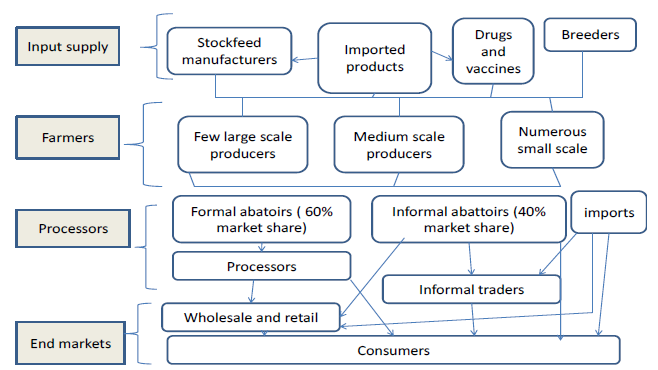
Figure 1: Value chain of pig farming industry in Zimbabwe (Mutambara, 2013)
The processor stage comprises slaughterhouses that play a vital role in the value chain. These slaughterhouses purchase pigs from the farmers, process them, and sell them (Wholesalers and retailers). For example, Zimbabwe has 20 registered slaughterhouses, according to a 2014 report (Lee, 2018).
Figure 2 shows the value chain of Mhuri Enterprises. In the earlier value chain, farmers had to bear losses due to the small price offered by the slaughterhouses and wholesalers. In addition, 60% of the slaughterhouse market was dominated by three slaughterhouses. High production cost and dominant market questioned survivor of small producers. Therefore, Mhuri Enterprises brought a unique idea to segregate 30 farmer families to raise the capital and lower feed prices due to bulk buying and lower logistics cost. The first initiative in the value chain was on the input side; pork production was reduced by $0.55 per pork due to its maze production—the restructuring in the demand side by eliminating the wholesalers from the value chain to avoid margin loss. Mhuri approached retailers and supermarkets directly with ten porkers a week. In addition, Mhuri Enterprises incorporated the slaughter process; this has helped Mhuri to have stringent control over health and safety requirements by the Ministry of health and agriculture. External slaughterhouses charged $0.30, which was reduced considerably due to the in-house process. These three changes in the value chain provided complete control to Mhuri Enterprises, which helped raise and supply quality pork products in the market (Lee, 2018).
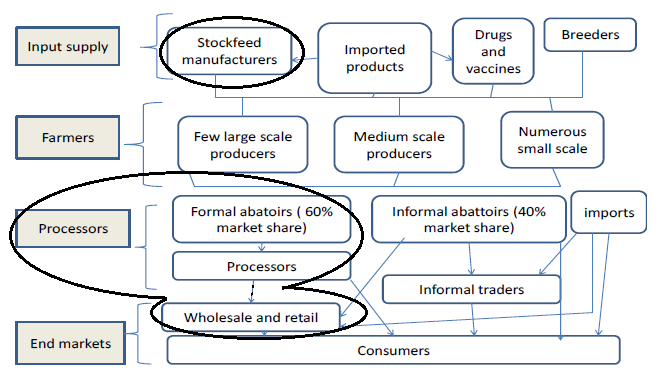
Figure 2: Value chain of Mhuri Enterprise (Lee, 2018)
Main factors of production
In economics, there are four factors of production, land means natural resources available for production, labour which is the workforce required for the process; capital means the financial requirement of the process; and finally, the enterprise is a risk-taking ability of a person or a group which is the umbrella to incorporate all the above (Amadeo, 2018). Figure 3 shows the schematic representation of Factors of production. This section discusses each factor of production about Mhuri Enterprise.
Land
The initiative taken by Mhuri enterprises was to segregate the group of farmer families to start a pig farming business. Thirty families came together under one name Mhuri Enterprises. For the individual farmer, it was not easy to compete for the market; however, the cooperative enterprise can compete for the market. It is necessary to note that earlier cooperative societies such as Zimpork failed due to politicians and people’s lack of dedication and involvement for a quick buck. Since the farmers were involved, the land, which is the natural resource, was available. Stockfeed which comprises 80% of the production cost, was reduced by producing maze on farmers’ fields associated with Mhuri Enterprise (Lee, 2018).
Labour
Mhuri is referred to family in Zimbabwe. The membership given out by Mhuri Enterprises was especially for families comprised of the couple, men and women, and their kids and relatives. This has helped Mhuri Enterprise to unite these families to ensure the sustainability of the business. Every family was committed to raising pork and producing a maze on their field along with their member. In the beginning, Mhuri had only 11 pigs which increased to 200 pigs after three years (Lee, 2018).
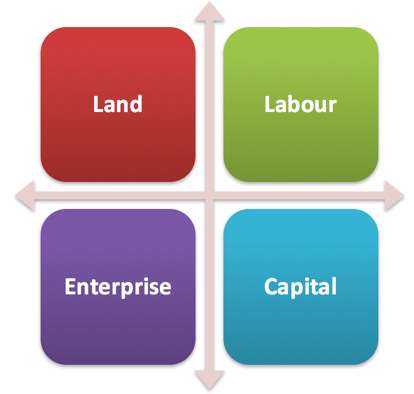
Figure 3: Factors of production (Amadeo, 2018)
Capital
The capital is the cost required to run the business. The initial capital was raised from these 30 families. The capital is later divided into two categories, fixed capital, and working capital. Mhuri enterprises raised initial capital through the membership contribution, which committee members determined. Revenue generated by selling as well as membership contribution was deposited in the local bank. Revenue and capital were distributed through a clear structure along with responsibilities. This capital was used for transportation, fees, profit-sharing, etc., regarded as working capital. Whereas the invested amount in the slaughterhouse, the warehouse could be regarded as the Fixed capital of Mhuri (Lee, 2018).
Entrepreneurship
A cooperative society existed in the district of Chiundura, Masvingo province, in the year 2001. During nine years, the society collected thousands of dollars to connect the village to the primary electric grid. The objective was accomplished in 2010. The leaders of this cooperative group came up with a new proposal to start a pig farming business. The Ganngarabwe family enterprise initially knew the business; later, it was changed to Mhuri enterprise to represent its core idea of family empowerment (Lee, 2018).
Major challenges faced
The pig farming sector in Zimbabwe faced numerous challenges, such as substantial regulatory and non-regulatory challenges. Non-regulatory challenges include high energy cost, low quality breeding stock, unskilled labour, costly meat processing, low farm yield, scarcity of slaughterhouse, and getting finance for the business. Regulatory challenges include adverse import duties, low-quality public service, unfavourable policies, discriminatory trade practices, costly certification, etc. Although following are the significant challenges faced by pig farming that led to forming of Mhuri enterprises (Lee, 2018).
- The unfavourable value chain for the pig farmers
The value chain of pig farming in Zimbabwe has unfavourable elements to pig farmers, tiny farmers. These elements are cost incorporated in stock feed. Few slaughterhouses and warehouses have control over the pig processing, making pig farmers compromise on cost. Production cost is approximately $2.85 per kg of pork, whereas these warehouses and slaughterhouses offer only $2.40 to $3.00 per kg, which is very low compared to the cost and efforts involved in raising pork (Lee, 2018).
- Low demand for the pork
Due to the economic meltdown, the consumers do not have disposable income, which leads to lower pork demand. Also, religious beliefs affected the demand for pork. The supply and demand graph below helps to understand the difficulty faced by the pork farmers. The graph shows the market mechanism of supply as well as demand that result in product price equilibrium. The supply curve shows the production of the goods available in the market, whereas the demand curve shows the willingness of the consumer to purchase the product since the demand for pork is less in Zimbabwe. As a result, the curve shifts to the left from P2 to P1, reducing the price of the pork product due to the low demand and increasing competition amongst suppliers (Lee, 2018).
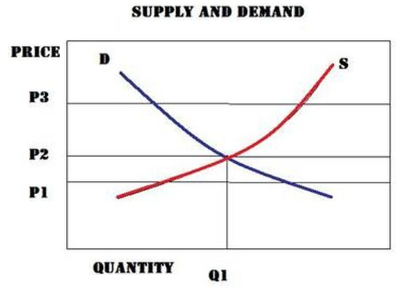
Figure 4: Supply and demand graph (Papageorge, 2018)
- A minimal number of slaughterhouses and fees
A limited number of slaughterhouses increases the logistics cost to the farmers living far away from the slaughterhouse. In addition, these slaughterhouses charge more than required, as much as $18 per pig, making the pork’s processing costly (Lee, 2018).
- Limited financial capital to procure the latest technology
The lower financial ability of pig farmers and unavailability of finances restrict the chances to improve productivity and profitability. The land acquired during the land reform program could not be used as collateral. Also, the banks’ interest rate is very high, making it challenging to profit from it (Lee, 2018).
- Unskilled labour
Most of the pig farmers have relied on the local communities. However, local communities are unskilled, and no formal training makes it difficult to increase productivity and profitability (Lee, 2018).
- The negative approach towards the cooperative pig farming
Many commercial piggeries could adopt a small number of farmers to smoothen the process and reduce some discrepancies. However, many commercial pig producers are reluctant to work under the cooperative concept (Lee, 2018).
Critical success factors and the strategy
Earlier failure of the cooperative societies in Zimbabwe was due to a lack of commitment, trust, and monetary interest. On the other hand, the Initial power grid cooperation of the Mhuri enterprises-built trust amongst each other. Members understand the importance and benefits of the cooperative system after the successful electrification of the village. The long-term vision was therefore developed for the pig farming industry. Every member contributed to the enterprise; therefore, all the members who participated have a sense of ownership rather than working for someone. Individuals, as well as groups, were created to deliver the responsibilities. Each transaction of the enterprise was transparent and available to every member builds solid trust amongst the members. The communication amongst the management and the members are effective in helping towards building the vision of cooperation (Lee, 2018).
The strategy used by Mhuri Enterprises to improve profitability is focusing on the costly elements in the value chain. The costliest element was stock feed, such as maize and soybean, compromising 80% of the overall cost. This cost was reduced by starting the maze production on the field of the members. The second element was eliminating warehouses from the value chain to improve profits. Mhuri directly approached retailers and supermarkets. The cost incorporated by dominant slaughterhouses was reduced by building their slaughterhouse (Lee, 2018).
The cumulative efforts of success factors and relevant strategies helped Mhuri enterprises improve profitability by selling the pork.
Economic analysis of successful pig farming by Dreamland Piggery
In South Africa, the pig raising industry is one of the minor industries within the agriculture sector, with a 2.1% contribution. However, the industry has seemed a considerable increase in the gross production between 2006 to 2016. This is due to increased demand for pork in the market. Anna Phosa is the only woman in South Africa to become a successful commercial pig farmer; the name of the enterprise is dreamland piggery. The dreamland piggery is enormous, which supplies 100-150 pigs a week; however, Anna started the business with only ten pigs a week, which later increased through the proper techniques (Appasamy, 2018).
Value chain analysis
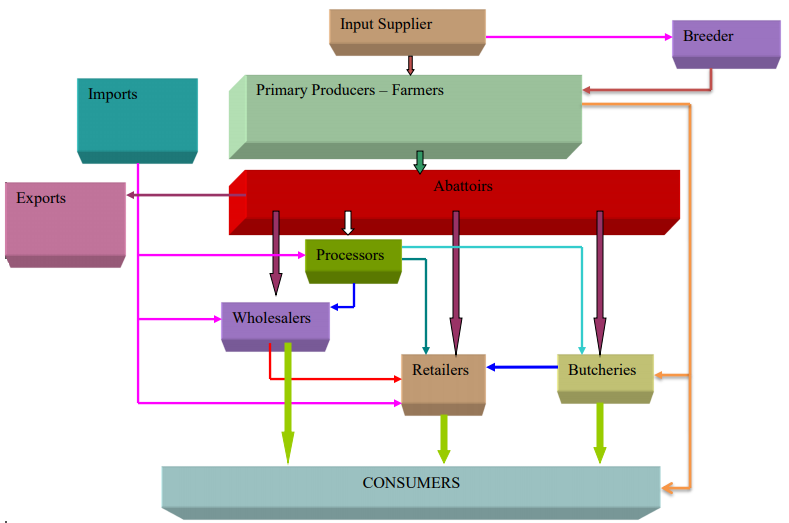
Figure 5: Value chain of pork production in South Africa (Mogala, 2017)
The value chain shown in figure 5 is closely similar to the value chain in Zimbabwe. The primary producers of pork are farmers. The input consists of 80% cost of production that includes medicines, feed, and labour costs. The pigs are sold to slaughterhouses or butcheries and later to the final customer. In South Africa, there are approximately 150 slaughterhouses. Mainly these slaughterhouses sell the meat to the wholesalers, processors, and retailers (Appasamy, 2018).
Main factors of production
Unlike the four factors that contributed to Mhuri Enterprises, Greenland Piggery had only one main factor of production that contributed immensely to starting the business.
Entrepreneurship
The main factor of production in this scenario is the entrepreneurship ability of Anna Phosa. Anna’s husband purchased a small piece of land in 2003 to grow vegetable crops such as cabbage, beetroot, green papers, and spinach and sell them to the hawkers. Anna was keen to learn new techniques to grow the farming business and enter into small poultry business. Anna started attending farmer meetings to grow the network. An acquaintance during the meeting motivated Anna to pursue pig farming instead of chicken. Anna was interested in the idea and decided to start a pig farm (Emeka, 2018).
In 2004, Anna invested $100 and purchased four piglets to start the business. To enhance their knowledge about pig farming, Anna started reading books and improved her network with other pig farmers through agriculture. In the same year, Anna purchased a boar for $70. The number of piglets increased significantly. Eventually, Anna started supplying pork to the market. The business improved as the demand increased for the pork raised on Anna’s farm (Emeka, 2018).
Major challenges faced
Greenland piggery initially faced several significant challenges (Mogala, 2017),
- Lack of business knowledge
Anna was initially involved in growing vegetable crops. Then, one of the acquaintances encouraged Anna to pursue pig farming. Anna started pig farming with only four pigs, but she did not know about the business. Eventually, Anna started learning through reading books on pig farming. Later the farm received help from the Ministry of agriculture.
- Getting finance for the business
The cost of pork production is very high, almost 80% of the production cost is for the stock feed, and the rest is for other activities such as logistics, medicines, and processing. In addition, Anna did not have any infrastructure for the pig farm; when the business started to grow, it was difficult to catch up with all the expenses, and finance was not readily available for being a small grower.
- Cheap dumping of imported pork
South Africa has several free trade agreements with other South African Development Community (SADC). This provides passage to other countries to export pork to South Africa, hence increasing competition. It is difficult for South African farmers to produce the pork at a competitive price compared to imported pork.
Critical success factors and the strategy
In the success of Dreamland piggery, the critical success factor was the continuous dedication and commitment of Anna Phosa. Anna trained herself through her steep learning curve. Anna also approached the Ministry of agriculture to receive help in her learning process. Another success factor is the working ethics of Anna; the customers are satisfied with product quality and the delivery that help the firm retain the customer with increasing demand (Emeka, 2018).
In the first year of pig farming, Anna began meeting with the renowned name in the pork industry to get the contracts to supply meat. Anna succeeded in pursuing Vereeniging Meat Packers and started supply meat. Anna won another contract with the big name ‘Pick n’ pack’ to supply ten pigs a week. Satisfied with the delivery and quality of the work company increased supply to 20 pigs a week which was again revised in 2010 to 100 pigs a week, costing $2.5 million. Dreamland piggery received a loan to purchase 350 hectares of land from USAID. As a result, the business has grown from 4 pigs to 4000 pigs, whereas supply is approximately 100-150 pigs a week to South African stores (Emeka, 2018).
Recommendations
Short-run economic measures
Short-term economic measures are the ones that could be rapidly implemented, and the results are quick. Zimbabwe’s government needs to focus on the value chain to restructure or support some elements to enhance the pig farming business. Two short-run measures are proposed below,
- Subsidize the stock feed for pig farming
Zimbabwe government can offer subsidies on the stock feed as well as medicines required to raise a pig. This contributed to 80% of the overall production cost. Offering subsidies will relieve pig farmers from the burden of excessive working capital. This will reduce the production cost to the farmer.
- Controlling the fee of slaughterhouse and purchase cost of pork by warehouse
Slaughterhouses charge excessive fees to the farmer; also, few dominant warehouses offer lower rates. Sometimes these rates are lower than the production cost causing the loss to the farmers. Controlling these costs by standardizing them, for example, fixed cost for slaughterhouses and variable cost according to the pig’s weight, can essentially help pig farmers, tiny farmers.
Both of these measures can be considered and implemented immediately. The effect of these measures will soon be observed. The reduced production cost and controlled cost at the processing plant can reduce the pork’s selling price, resulting in more selling as people can afford the pork. These measures can bring a win-win situation for farmers and consumers. The second measure’s only disadvantage of the 2nd measure is that slaughterhouses and warehouses probably would not be satisfied and may create obstructions. The demand and supply diagram shifted to the left in figure 4 will shift to equilibrium due to improved sales.

Figure 6: Supply and demand graph (Papageorge, 2018)
Long-run economic measures
- Providing finance with a low rate of interest
At present, funding available for the farmers is meagre; hence many small pig farmers are going out of business. The government could start various finance schemes to keep these businesses and improve their productivity through free counselling sessions to support the business. The funding will also enhance the infrastructure requirement of small pig farmers.
- Improve the number of slaughterhouse and warehouse
At present, very few slaughterhouses and warehouses manipulate the cost while buying and slaughtering the pig. The government could encourage different businesses or entrepreneurs to take an interest in this sector. This will help the farmers lives far away from the existing slaughterhouse or warehouse. Reduce the cost of logistics. The competition amongst slaughterhouses and warehouses will stabilize or lower the price automatically. The dominance of a few enterprises will be reduced, which will help pig farmers.
Conclusion
This report discusses two businesses located in different countries based on their economic environment. The Mhuri enterprises are located in Zimbabwe, whereas Dreamland piggery is located in South Africa. Both companies are in the field of pig farming. The economic environment for both companies is different due to a different government, infrastructure, and consumer habits. Mhuri Enterprises became successful by eliminating costly value chain elements such as wholesalers and external slaughterhouse processes.
On the other hand, Dreamland piggery achieved success being a part of that value chain. Also, Mhuri enterprises is a cooperative company formed by aggregating 30 farmer families, whereas Dreamland piggery is solely its own company formed due to the ambition of an entrepreneur Anna Rosa. Both the companies are successful in their endeavour but still affected by government regulatory and non-regulatory policies. In both the case studies, Dreamland piggery seems to be a winner; however, it is necessary to consider various obstacles posed by systems on Mhuri enterprises to achieve success before declaring Dreamland piggery as a winner. The efforts are also taken to recommend short-run and long-run measures for the Zimbabwe government and its advantages and disadvantages.
References
Amadeo, K. (2018). 4 Factors of Production. [online] The Balance. Available at: https://www.thebalance.com/factors-of-production-the-4-types-and-who-owns-them-4045262 [Accessed 22 Jan. 2019].
Appasamy, Y. (2018). Anna Phosa is living her dream of becoming a successful pig farmer. [online] Mail and guardian. Available at: https://mg.co.za/article/2018-08-24-00-anna-phosa-is-living-her-dream-of-becoming-a-successful-pig-farmer [Accessed 22 Jan. 2019].
Emeka, G. (2018). How Anna Phosa Became one of Africa’s Biggest Pig Farmers. [online] MyAfribusiness – Business education, inspiration, ideas, empowerment & collaboration for entrepreneurs. Available at: https://myafribusiness.com/anna-phosa-became-one-africas-biggest-pig-farmers/ [Accessed 22 Jan. 2019].
Jurevicius, O. (2013). Looking at your Value Chain will make you Smarter. [online] Strategic Management Insight. Available at: https://www.strategicmanagementinsight.com/tools/value-chain-analysis.html [Accessed 22 Jan. 2019].
Lee, H. (2018). Mhuri enterprise: innovating the value chain of small-scale pig farms in Zimbabwe. GS92, pp.1-15.
Mogala (2017). A profile of the South African pork market value chain. Arcadia: Agriculture forestry and fisheries.
Mutambara, J. (2013). Non-regulatory constraints are affecting the pig industry in Zimbabwe. Online Journal of Animal and Feed Research, 3(1), p.63.
Papageorge, N. (2018). Supply and Demand Analysis – An Introduction. Johns Hopkins University.